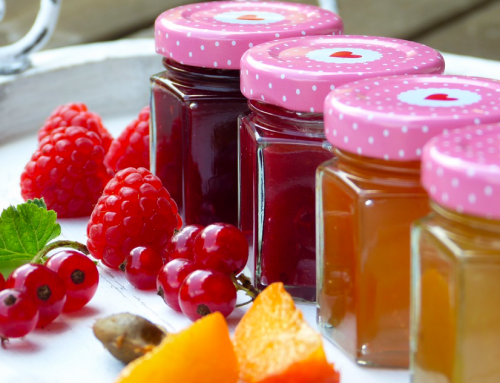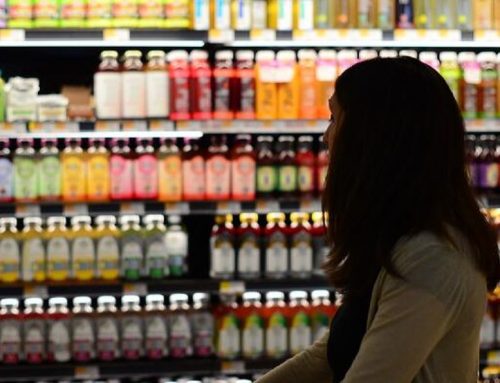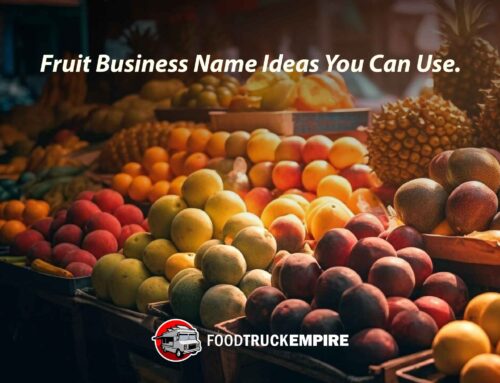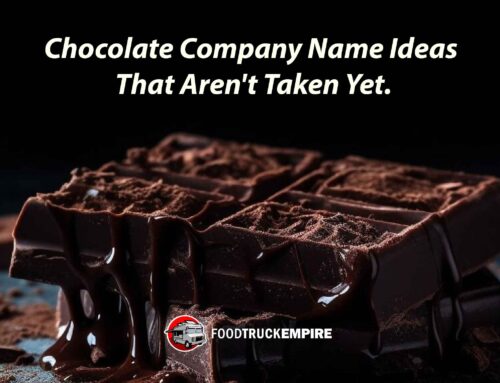Welcome to the Complete Guide to Profitable Co-Packing! I hope this guide helps you determine if copacking is right fit for your company, how to find the right co-packer, how to build a better relationships with these businesses and of course how profit from it all.
About this Guide
Before we begin, I want to give you background into the author of this resource. The entire guide was written entirely by Michael Adams. Michael has owned and operated three different food businesses (so far) in his career.
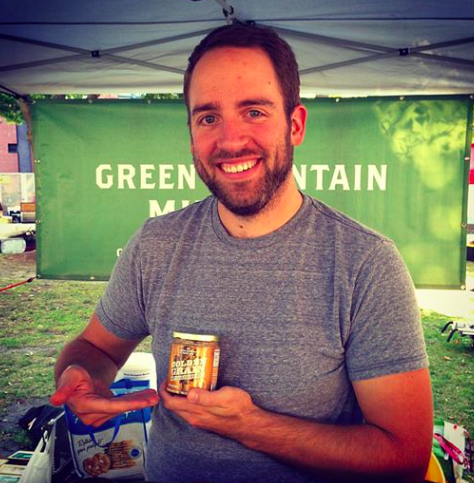
Michael Adams, the author of this guide, at a local farmer’s market.
One company was called Eddie’s Energy Bars, was recognized as Entrepreneur Magazines Hot 100 companies. Another is an artisan condiment brand called Green Mountain Mustard with over 50 retailers across New England at its peak.
In other words, Michael didn’t just write this guide, he’s lived it. Michael understands the nuances that go into a co-packing partnership. These lessons are pulled directly from his own experience working with co-packers in his own businesses. We hope you get a lot of value out of this guide on your journey to launching the next great food business! Let’s jump in!
How to use this guide.
There’s a ton of information in this guide. And it’s organized as best as possible to make it not only easy for you to digest, but you’ll even learn something, too.
Wherever possible, there are actionable steps for you to build out your co-packing plan so that you’re not meeting with co-packers without knowing anything (plus, that’s super embarrassing).
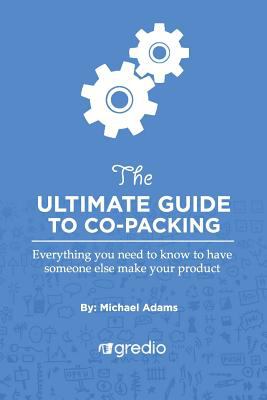
Read the Ultimate Guide to Co-Packing Here.
How the guide is structured:
- Summaries: Cliff notes just for you
- Lists and bullets: Easy, quick, digestible points so you don’t have to read every word.
- Real-life stories: Where possible, I include my personal stories from working with several copackers over the years.
- Worksheets: In the appendix, there are worksheets to help you make the best decision possible when it comes to selecting and working with a co-packer.
- Frequently Asked Questions: A quick Q&A of questions I’ve been asked over the years.
Now that I’ve covered the structure of the guide, it’s time to get to the meat of this guide: how to select and work with a copacker to bring your company’s products to the next level. First up is the question I get most often: What is a co-packer and how do I find one? Let’s explore your options.
What is a co-packer?
A co-packer is a food manufacturing facility or commercial kitchen that allows you to produce recipes at scale. Eventually, you will get to the point in your food business where you don’t have enough time and energy to produce enough food to meet demand. This is the best time to start thinking about utilizing a co-packer. But more on that later in the guide.
Getting Started with Co-Packing
Navigating the world of co-packing is:
- Intimidating
- Confusing
- Frustrating
- Risky
- Rewarding
- Expensive
And more. It’s not for the faint of heart. Even though you’re having someone else make your product, you’re still involved in the management of your business. In other words, the weight of food manufacturing isn’t completely off your shoulders.
After reading this guide, you’ll have a better idea if you want to take on a co-packer. But first, you’ve got to answer some tough questions.
Before you head down the co-packing route, there’s a couple of things you have to sort out with yourself and your business partners. Don’t brush this step off.
These are the tough questions. The questions no one wants to talk about. The questions you have to work through before you even start your search.
Just like starting up your food business and answering questions like “Where am I going to get the money?” and “Do I want to do this?”, getting started with co-packing has its own set of questions. Lets look at a couple of them.
5 questions to answer before you look for a co-packer:
1. Do I want to give up control of making my product?
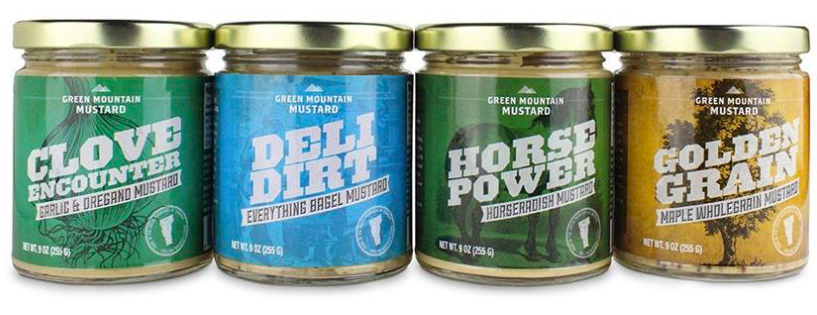
My line of mustards.
Spend some time with this one. It’s the most important question, because it fundamentally impacts your business. Do you want to give up control of your manufacturing? For many food producers, they want to be the only one who makes their product.
Maybe it comes out better, maybe it’s cheaper, or maybe you’re a control freak. Ok, I’m kidding about that last one. Regardless, lets look at pros and cons of outsourcing your manufacturing:
Pros
May be cheaper: Often, outsourcing your manufacturing is cheaper because you don’t have the overhead of your own kitchen and you can make a lot more product for the same amount of money,.
More time for sales: Sales drives your food company’s growth. So, wouldn’t it be great if you had more time to sell your food product? Of course! Outsource your manufacturing and you’ve got your wish: more time to find new retailers, do store demos, and attend local fairs and festivals.
Less to worry about: Sure, you’ve got to manage the manufacturing process, but taking the manufacturing off your plate means you have less to worry about. Co-packers worry about equipment breaking, when they’re going to schedule you, and the ingredients you have.
Cons
Maybe expensive: As you’ll learn later in the guide, copacking can be expensive. There’s high
day rates, storage fees and more that make up the copacking industry.
Quality control: If you co-pack out of state, quality control is out of your hands. If something goes wrong, your co-packer has to worry about it. You can’t do much. This is also true with quality control. Generally, only when you pick up your product do you notice quality issues. That’s risky.
Lots of inventory: When someone else is making your product, you’ve might need to make more product to get your costs down. More product means more cash is tied up in product inventory. And more cash tied up? We all know that may spell doom if you can’t seem to move your product fast enough.
It’s a tough decision to give up manufacturing your food product, but that’s what co-packing is. Let’s move on to the next question you need to ask yourself.
2. Do I have the cash to co-pack?
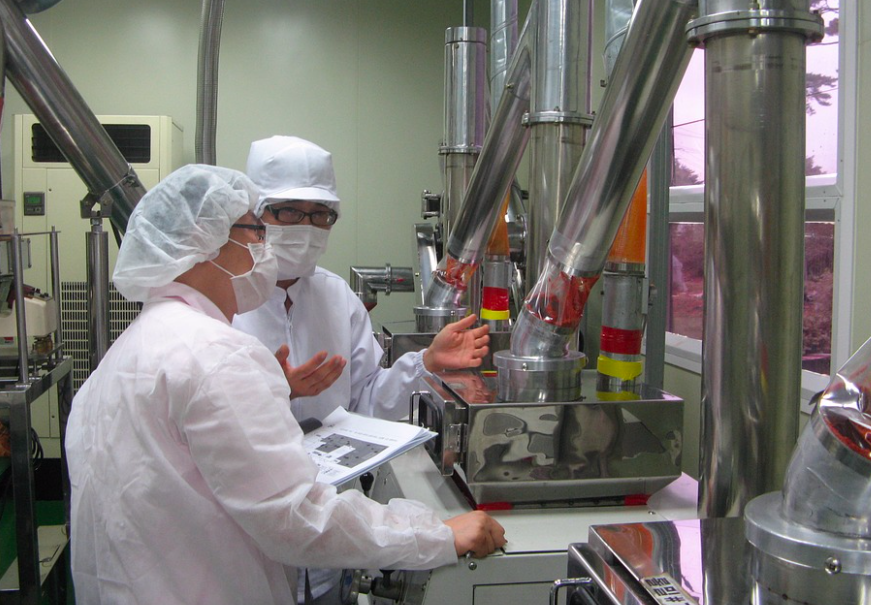
Hiring help costs money.
Co-packing can quickly empty your bank account. Let’s say you have 10 recipes. At upwards of $600 – $800 per day, a co-packer is likely to run 23 flavors day. That means 5 days of co-packing. Which really means $3,000 - $4,000. And that’s just for your co-packer. Include ingredients and packaging, you’re likely to be out $10,000 just for a couple days of manufacturing. See how everything can quickly add up?
Cash is king in any business. And making sure you have enough of it is key to growing your business.
When you’re producing in your house, everything is cheap. You have no kitchen rental time to worry about (since you have 24/7 access), you have no employees to pay, and ingredient storage is practically free.
When you switch to copacking, your company has to pay for all of this and then some. There are tons of costs associated with production that you don’t incur at home. Do you have the cash to make the transition?
Whether the money comes from your current cash reserves, bank loans, credit cards, or friends/family is up to you. Make sure you have some money because if you’re going along and all of sudden there’s no cash then you have no company. And no company means your products are coming off the shelf.
3. How will you manage everything?
How are you going to oversee quality issues? Who is going to interact with the kitchen manager? Make sure you’ve got a team member or members to manage everything.
Who is going to make sure you’ve got enough ingredients? Who is going to make sure you’ve got recipes and production setup? While many of these responsibilities are part of the copackers, you’re going to want to have a point person to manage everything.
If you’re the sole owner of your food biz, you’ll manage everything (surprise, surprise). Make sure you’ve got processes and systems in place (plus software to run your food business). You’ll be glad to have the system in place before everything goes awry.
4. Is there a co-packer in your area?
Doing an initial copacker search may yield no results. But, thinking outside your area. Maybe your copacker is in the next state over. I know many manufacturers who copack in Vermont, but they run their companies from all over the place. Kansas, Massachusetts, and New York City for example. But I also know Vermont companies who co-pack out of state because there is a co-packer who better meets their company’s needs.
Don’t like driving 35 hours to product your product? Yeah…I don’t blame you. Both of my co-packers have never been more than an hour away. But, you may not have any co-packers in your location.
Before you give up because you think there aren’t any copackers in your area, try asking around. Talk with other food producers to see what they do. And who knows maybe you’ll build a shared kitchen (and that’s a whole other guide in its own right!).
PS: You can find more information on finding a co-packer in this chapter.
5. Why do you want to do this?
The final question is more of a personal, introspective question: Whydo you want to have your products copacked? A lot of business owners I’ve spoken to over the past few years have done it to save tons of time. But, don’t just make that your reason.
Think about it.It’s important to nail this down. Don’t do it because everyone else is doing it.
● Do it because it saves you time
● Do it because it saves you money
● Do it because you get more resources
● Do it because you’ll meet industry veterans
● Do it because you want to
And most importantly, do it because it’s the right move for your company. After figuring out the outsourcing manufacturing question, this is the second most important question. It can shape your company’s future and influence decisions to grow your company.
And remember….
All of these questions should be discussed with anyone who has a major role in your company: business partners, family, friends, business advisors, and even small business consultants (if you use one). You never know when someone is going to suggest something or connect you with someone you didn’t know beforehand.
Get these questions answered. But them in a word document, write them in your notebook, or just talk about everything face to face.
The next section is about why you would even need to consider using a copacker. And many of the ideas have to do with running your business not emotionally driven reasons.
Let’s move on… In the next lesson, we’ll evaluate whether or not your business is ready work with a co-packer.
If you’re serious about starting a food business, we also recommend signing up for our free Food Business Startup Kit with templates, guides, and audio lessons with other food entrepreneurs.

